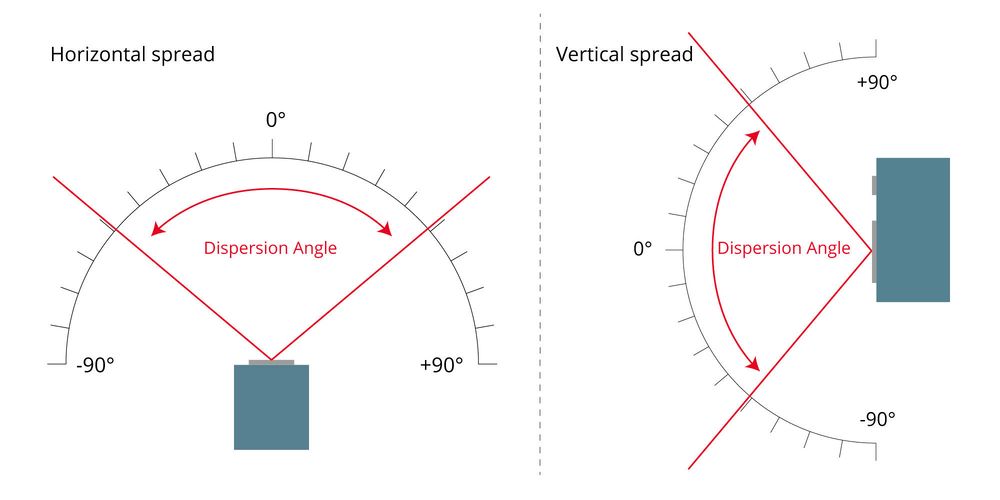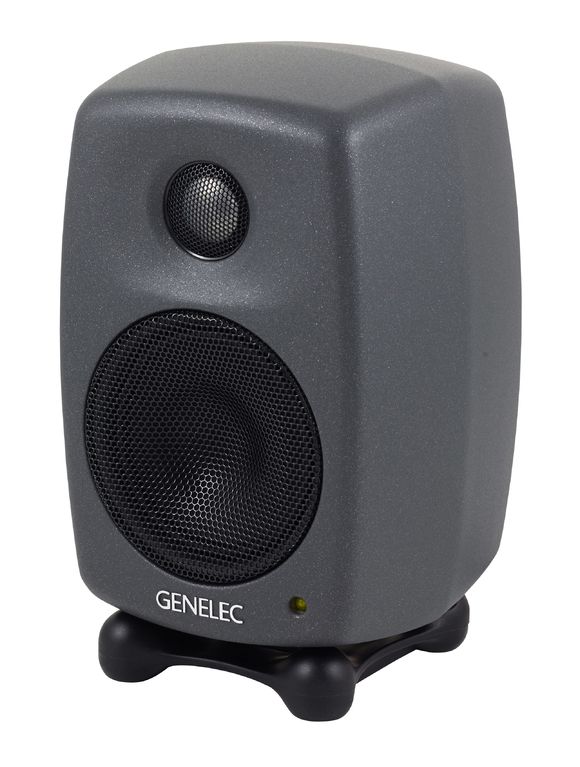4. Characteristics
Dispersion Angle
Near-field monitors need to have a very wide dispersion angle because you sit close to them. The frequency response should remain consistent in all directions. You have a relatively broad working area as a sound engineer, from leaning over the mixing console to comfortably leaning back in your chair. Near-field monitors are typically placed directly behind the meter-bridge. It's essential that the sound characteristics of these speakers don't change significantly within this entire area.

Dispersion Angle
Frequency Response
Frequency response is one of the most critical factors to consider when evaluating studio monitors. It should cover a wide frequency range, be linear, and as directionally-independent as possible. Unlike hi-fi speakers, studio monitors should not exaggerate the frequency response with excessive highs and lows.
Impulse Response
High-quality amplifiers and speakers are characterized by their ability to reproduce impulses accurately and exhibit minimal resonance. However, no speaker can perfectly reproduce a needle-like impulse without some distortion. The diaphragm and voice coil have some inherent mass and springiness, which introduce a degree of post-vibration. The extent of this effect and the type of resonance shown by the speaker significantly impact the sound quality. Various strategies, such as aligning the bass speaker within the enclosure for precise timing, are used by loudspeaker manufacturers to manage this effect. The most significant challenge arises in the crossover frequencies between the bass and tweeter. As these frequencies always fall within the audible range, the crossovers must consist of filters with steep slopes, typically around 24dB/octave. In the world of near-field monitors, two-way speakers are prevalent since they only require a single crossover frequency. An added benefit is that two-way speakers can be combined with subwoofers for reproducing very deep bass (often used in surround sound systems).
Distortion/THD (Total Harmonic Distortion)
Low distortion is an essential quality for speakers. Distortions are usually more noticeable in the bass frequencies than in the mid and high ones. Speaker diagrams often depict various harmonic levels, such as the second and third harmonics, in addition to other non-harmonic noise (THD & Noise). Harmonic distortions generate overtones that aren't originally in the audio mix, which is often heard in overdriven guitar sounds. Recordings of soft, closed-lid piano music or solo trombone pieces can reveal these harmonic distortions.
Design
When it comes to studio monitor design, avoiding sharp edges where sound can diffract is crucial. That's why many speaker enclosures feature rounded edges. Tweeters, in particular, are often placed within a funnel-like structure in the enclosure, which helps direct sound waves around them while maintaining a wide dispersion angle. In terms of aesthetics, it's usually not recommended to use fabric coverings for studio monitors.

Genelec 8010 AP
The perfect studio monitor would have an infinitely extended front side, essentially embedded in the wall to prevent acoustic anomalies (those who have heard an unenclosed speaker know what I'm talking about). Nevertheless, this design is typically reserved for professional studios equipped with large diffused-field monitors capable of producing frequencies below 60Hz with minimal distortion.
Near-field monitors are free-standing and can be fine-tuned with additional subwoofers. The issue with small near-field monitors, however, is bass reproduction. Because it's emitted both forwards and backwards, this can result to audible reflections. Placing speakers on shelves might lead to resonance problems, which in turn could cause booming.



